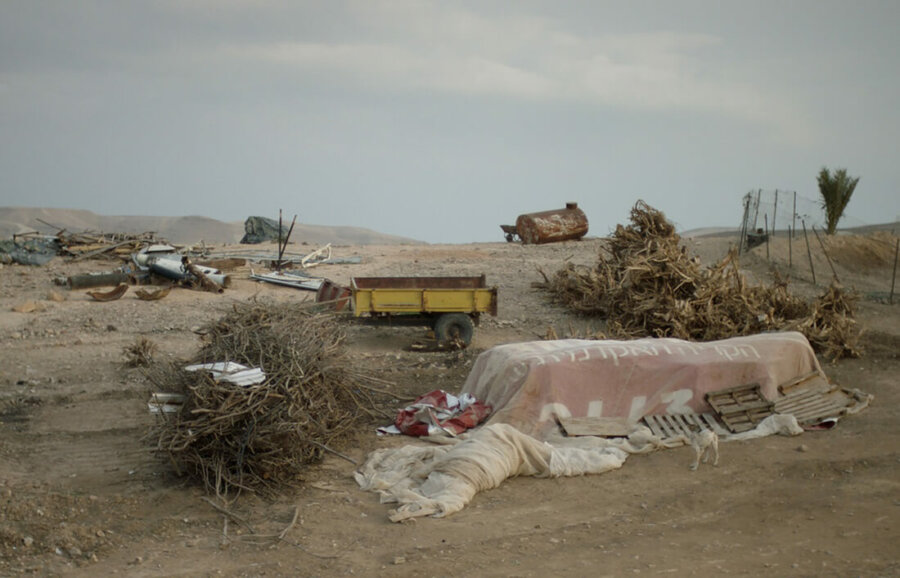
Courtesy de l’artiste © Jumana Manna
The Economy of Living Things: Jumana Manna with Ali Cherri, Oscar Murillo, Steffani Jemison
Satellite 10 programme. Maison d'Art Bernard Anthonioz, Nogent-sur-Marne
From 30 November 2017 to 04 February 2018
Extramural
Watch the Osei Bonsu’s video portrait
The Economy of Living Things features work by four international artists – Ali Cherri, Steffani Jemison, Jumana Manna and Oscar Murillo – who draw on the visual arts, archaeology, music and literature to draw up an alternative map of modern migrations.
The final part of the Satellite programme 10, the exhibition is concerned with the continual flow of people, plants, animals, artefacts and cultural products found in everyday life. It takes as its point of departure the recording of lived experience and the state of human progress in the twenty-first century. The artists frame their own subjectivity through the lens of the present while exploring deepening relationships between memory and fiction, communities and civilizations, the dead and the living. […]
Opening with Ali Cherri and closing with Jumana Manna, the exhibition focuses on tradition and
the preservation of histories as containers of living memory. In their work, Steffani Jemison and Oscar Murillo emphasize the poetics of gestures informed by wider socio-economic conditions linked to factories or public spaces. Going beyond the notion of physically mapping history, The Economy of Living Things considers the political body’s movement through material, local and symbolic time, and the impossibility of controlling living things. […]
Watch the Jumana Manna’s video portrait
Jumana Manna
Palestinian artist Jumana Manna (born in the United States in 1987) makes films and sculptures
that explore the ways in which social, political and interpersonal forms of power interact with the human body. Her films weave together fact and fiction, biographical and archival materials, to investigate constructions of national and historical narratives. Her sculptures, more abstract
by comparison, take interest in the calcifications of memory, as represented by the artefact real
or forged.
In recent projects, Manna has used film and sculpture to recompose various archival materials
that pertain to historical narratives of the Levant and northern Europe as separate and relational
geographies. These works have explored the ways in which economic, political and interpersonal
forms of power condition architectural sites as well as human and plant life. Manna has a particular
interest in the erasures that accompany various modern scientific preservation practices; her projects
challenge the binary constructions of a pure and unchanging heritage on the one hand, and the
embrace of innovation on the other.
In her newly commissioned work Wild Relatives, Manna follows the matrix of hierarchies and
relationships involved in a transaction of seeds between the Norwegian town of Longyearbyen in
Svalbard, an island in the Arctic Ocean, and the Bekaa Valley in Lebanon. The film travels the path
of these seeds and traces motifs of extracting and placing different life forms from and into the ground, back and forth from dry lands to permafrost.
Curator: Osei Bonsu.
Partners: The exhibition is co-produced by the Jeu de Paume,
the Fondation Nationale des Arts Graphiques et Plastiques (FNAGP),
and the CAPC musée d’art contemporain de Bordeaux.
The Fondation Nationale des Arts Graphiques et Plastiques is a permanent partner in the Satellite program.
The Friends of CAPC
contribute to the production of works in the Satellite program.
With the participation of the Cité internationale des Arts.
Media Partners:
Art press, paris-art.com, Souvenirs from earth TV.
MAISON D’ART BERNARD ANTHONIOZ
16, rue Charles VII – 94130 Nogent-sur-Marne
http://maba.fnagp.fr
